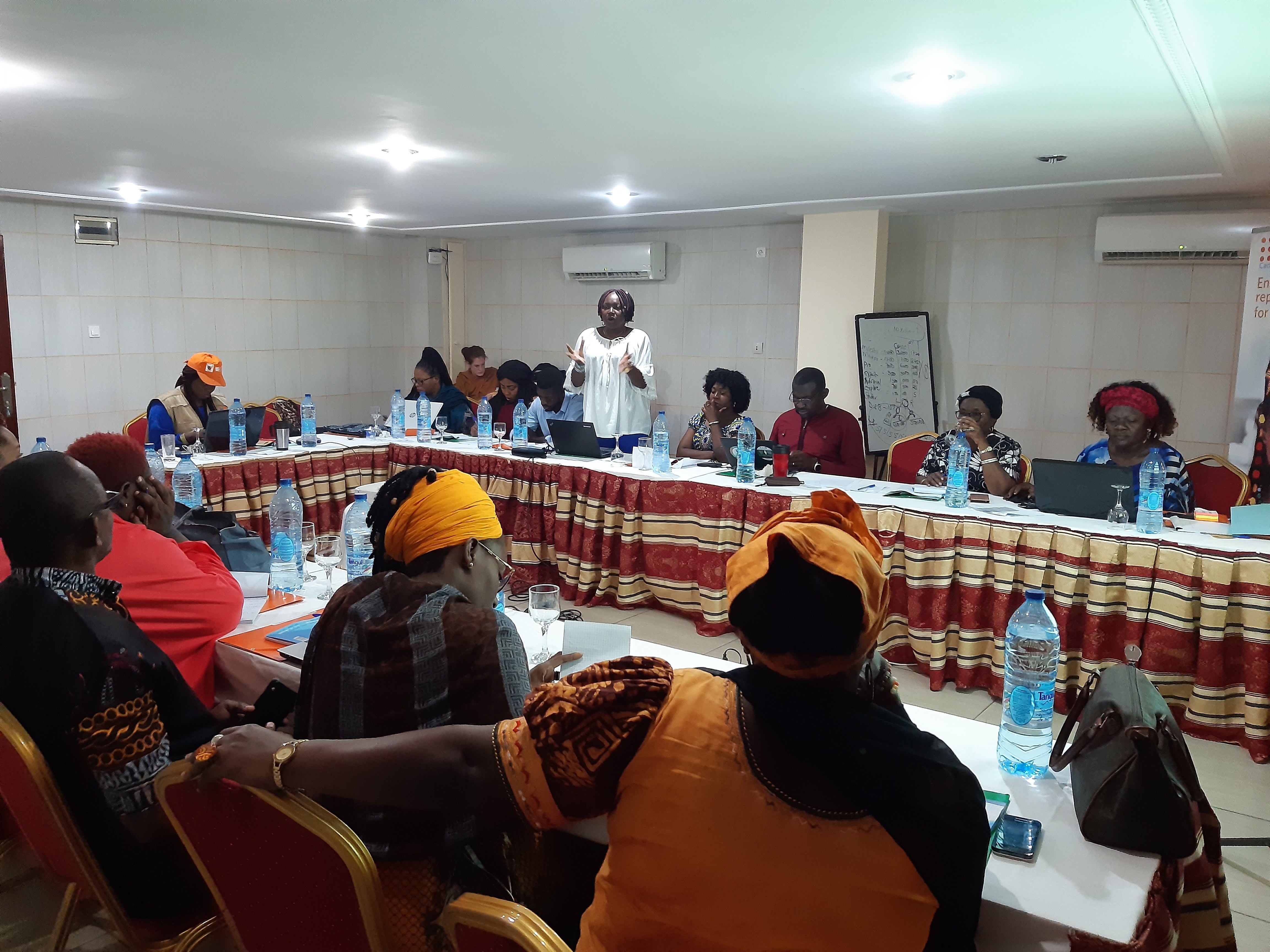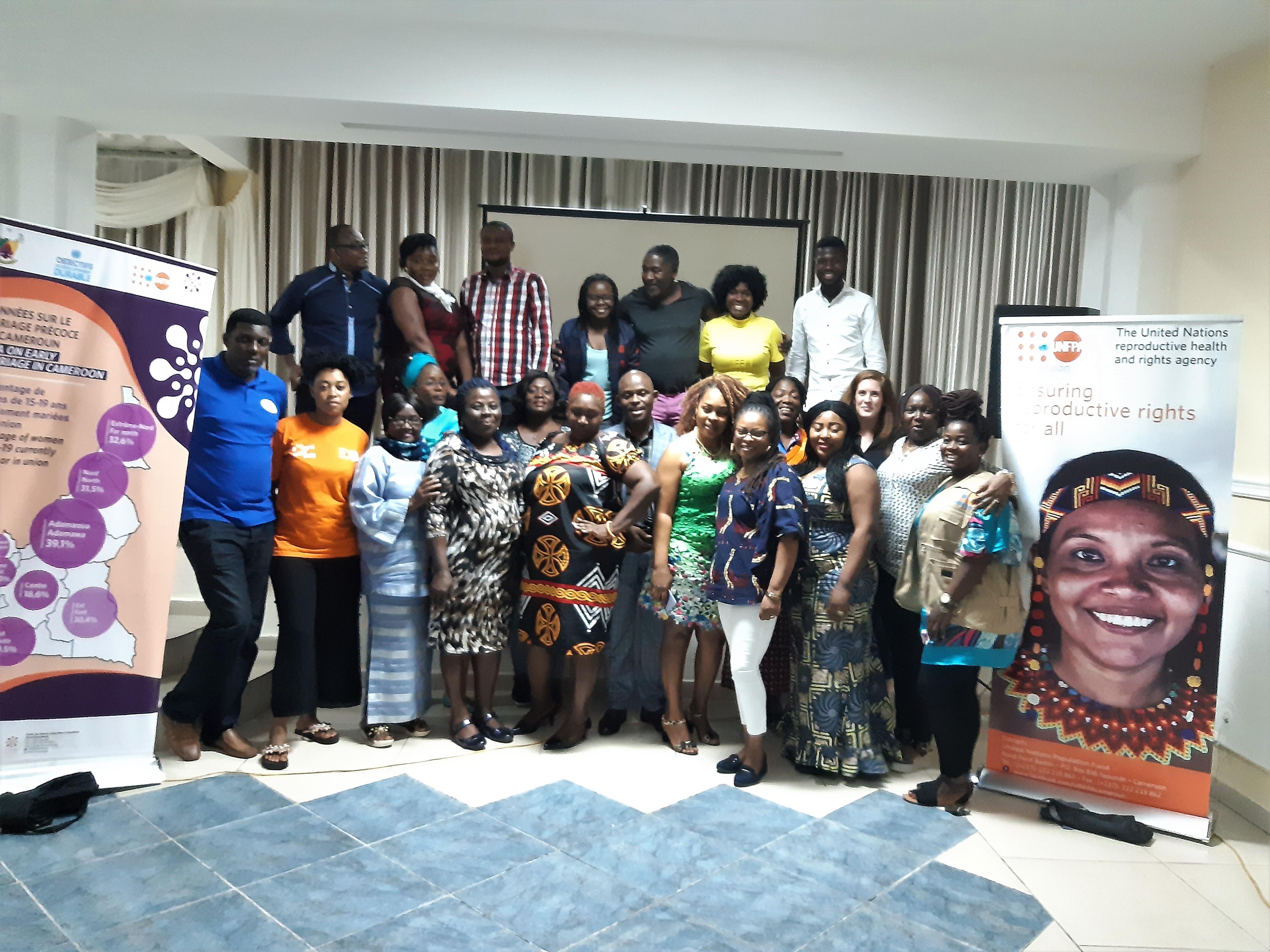Toward a Comprehensive Humanitarian Needs Overview and Response Plan for the GBV Sub Cluster.
Within the framework of its mandate and in support of the enhanced Humanitarian Programme Cycle (HPC) approach, UNFPA Cameroon has taken the lead to roll out for the first time, the new Humanitarian Needs Overview (HNO) and Humanitarian Response Plan (HRP) blueprint and the Joint Inter-sectoral Analysis Framework (JIAF). Working in synergy with members of the Gender-Based Violence (GBV) Sub cluster, one of the objectives of UNFPA Cameroon is to ensure that the new requirements for HNO and HRP are met by strengthening a joint intersectoral needs identification and analysis.

GBV HNO/HRP process
Photograph: UNFPA, August 2019
The current situation in the South West and North West regions characterized by increased insecurity has been hampering humanitarian action. However, UNFPA has been committed to provide lifesaving services to the affected population. That is why, in spite of the prevailing situation, some 20 members of the GBV Sub cluster from the crisis-affected North West and South West Regions as well as GBV stakeholders from the neighbouring Littoral Region met in Douala to jointly identify the humanitarian needs and response plan for 2020 within the context of the new HPC approach. After two days of intensive brainstorming, the participants were able to assess not just the immediate, chronic and structural causes, but also captured the emerging risks to better define acute needs versus longer term needs, as well as the severity.
During the workshop a review of the information landscape was done, including data availability in Cameroon. Potential data sources to inform GBV needs and risks were also identified. In the process, the Douala workshop participants emphasized the need for the data to be prepared in partnership with other clusters, upholding GBV data collection principles. They also underscored the importance of streamlining relevant risk indicators in existing data collection mechanisms. Finally, the analysis of the multi-sectoral needs assessments was reviewed with the GBV lens. At the end of the workshop, the participants resolved to continue working to fine-tune the document so in comply with the new initiative.
Across the two affected Regions, the situation continues to deteriorate with 1.3 million people now in need of assistance. The conflict has left over 536,000 internally displaced, 237,349 returnees and 39,602 Cameroonian refugees in Nigeria. The outlook for the rest of 2019 is one of emergency response as displacement continues due to the ongoing conflict and vulnerability is compounded as services deteriorate and resilience is eroded. The situation is characterised by human rights and protection violations that have engendered an upsurge in gender based violence.

Photograph: UNFPA, August 2019


